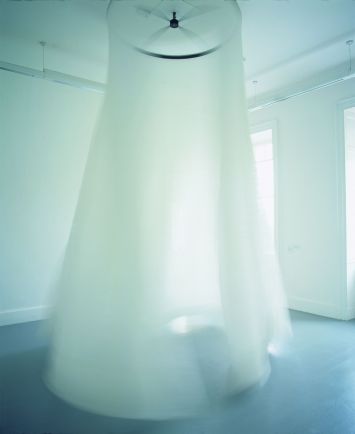If you’ve ever taken kids around a museum, you’ll know the hazards. Up to the age of four or so, anything can happen, particularly with boys – if it looks climbable, it’ll be climbed, etc. I took our two youngest to see a James Coleman installation at IMMA around a year and a half ago (time is vague when kids are young). It was a beautiful installation in the chapel space; I’d already seen it at the opening, but wanted another look. You had to enter through a darkened, almost black, muffled passageway, and then you were in a cavernous space where Background was being projected.
Child A goes tearing in. Child B decides that the entryway is too scary and won’t budge. Parent X knows A will already be inspecting the scaffolding that holds the projector with climbing on his mind. Such are the dilemmas.

Last Saturday I took the kids to IMMA again, having not been for a few months. They love the formal gardens, and it’s easy to pass an hour or more there. It’s takes a bit of cajoling to get them inside to where the exhibitions are. They took eagerly though to the Between metaphor and object: art of the 90s from the IMMA Collection show. It consists, as the name suggests, of works from the collection, which could be a bit so-so. However, the selection is so good and the curation (by Christina Kennedy and Marguerite O’Molloy) and installation so fine that the show is a real pleasure. Things went well, with only the occasional admonition, until the Ann Hamilton piece. The work consists of a very, very tall white curtain hung in a circle; there’s a narrowish gap in the curtain, and the whole thing rotates for about 10 seconds before stopping at an apparently random location, waiting about 2 seconds, and then setting off again.
What was Hamilton thinking? If she was thinking, “I’ll drive the parent of two youngish children mental," then the work is a complete success. When the contraption stopped, in ran the two kids. I respected the sign saying only two people were allowed at a time. Did the kids come out? Yes, but only to run back in, again and again. I coudn’t even get into the thing if I wanted to now – it was impossible to predict where the curtain would stop, and I couldn’t get to the opening before the kids ran in or out or (increasingly) crawled under.
It’s one way of passing ten minutes or so. Then I got to do it for another five minutes after we’d hit the end of the corridor and doubled back. The invigilator there was very patient, but by the end of the show’s run the group of invigilators as a whole may be in therapy.
My point? First, that there’s no telling what a kid will do in a museum; the great reward for the adult is seeing works through their eyes. Second – and not at all obvious from the above – it is very likely that there will be increasing numbers of kids in museums and other art spaces over the next while. It’s a relatively cheap outing. Artists and curators take note, be thrilled and beware.